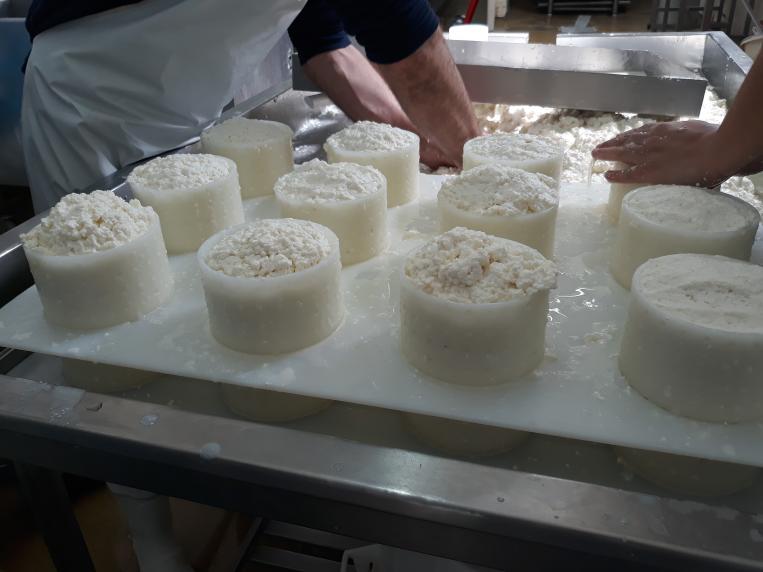By: Helena Rodrigues

Serpa cheese is a traditional product certified with Protected Designation of Origin (PDO) produced in Alentejo. In the production process of this cheese, raw sheep's milk and vegetable coagulant (extracted from the thistle flower Cynara cardunculus L.) is used. The minimum maturation period is 30 days, the addition of starter cultures and the pasteurization of milk are not allowed. This is one of the most recognized traditional Portuguese cheeses, thanks in large part to its unique sensory characteristics and its extensive cultural heritage.
There are, however, physicochemical and microbiological variations resulting, for example, from some differences in the composition of the milk (depending on the animal breed and its diet throughout the year) and from multiple particularities in manufacturing practices. These and other parameters result in a heterogeneous final product, which can lead to economic losses for the producer when it involves quality reduction, loss of certification or even raises food safety issues.
In the present study, carried out under the internal coordination and guidance of Prof. Dr Manuela Pintado and guidance from Prof. Dr Freni Tavaria, both from the CBQF, analyzed rheological and physicochemical parameters to identify those that best distinguish Serpa DOP cheeses from cheeses with lower organoleptic quality and which, consequently, cannot obtain certification. Samples of Serpa cheeses produced by four different DOP producers and in different seasons were studied. All cheeses were rated between bad, good and excellent by a panel of tasters certified in sensory analysis. The results proved the high diversity of this product produced with raw milk, in which not all managed to obtain DOP certification.
But the most interesting thing was that the detailed chemical analyzes allowed the creation of a profile that identifies and distinguishes the various levels of quality of Serpa cheese. Through consecutive statistical analyses, the selected parameters include propionic, butyric, isopentanoic and dodecanoic acids, tyrosine, tryptophan and isoleucine amino acids, 2-undecanone ketone, isovalerate ethyl ester, fat-free moisture content, G' 1 Hz, the maturation index and the ratio between non-protein nitrogen and total nitrogen. Together these markers characterize the various cheeses in a way that aligns with and matches the sensory panel assessments.
How to value milk that does not allow the production of a DOP-certified cheese? One option is the pasteurization of milk combined with the selection of autochthonous microorganisms for the development of a starter culture. Although this new product cannot be marketed as Serpa DOP cheese, it may have highly appreciated organoleptic characteristics and additional potential for markets that restrict or prohibit the use of raw milk. This route has the potential to support the small ruminant sector and reduce economic losses for producers.
The scientific article about this work is available online: Araújo-Rodrigues H, Martins APL, Tavaria FK, Santos MTG, Carvalho MJ, Dias J, Alvarenga NB and Pintado ME (2022). Organoleptic Chemical Markers of Serpa PDO Cheese Specificity. Foods. 2022, 11(13), 1898. https://www.mdpi.com/2304-8158/11/13/1898



